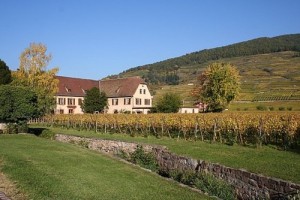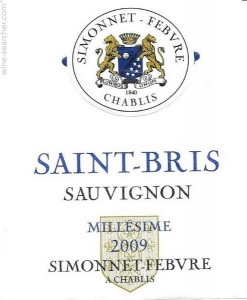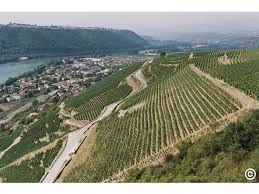Lifelong lessons: 10 things I just learned about French wine
For many of us, wine is the ultimate lifelong-learning experience. The more we learn, the more we realize how little we know, and trying to “know it all” is a fool’s errand.
So upon receiving so many wine reference books this year, I decided to really dive into them, starting with the handy-dandy, tastes-great/just filling-enough Food & Wine Guide 2016. I’ve glided through the French portion and picked up these 10 new (for me) nuggets:
 · I knew that the juice from one of my favorite Alsatian wineries tastes like it came from near a mountain stream, but I did not know that Weinbach (left) translates as “wine creek.”
· I knew that the juice from one of my favorite Alsatian wineries tastes like it came from near a mountain stream, but I did not know that Weinbach (left) translates as “wine creek.”
· I knew that Alsatian wines labeled “Pinot Blanc” are almost invariably actually blends. But I did not know that most sparkling wines from that region were made from, you got it, the pinot blanc grape.
· I knew that white Bordeaux generally are sauvignon blanc-semillon blends, but I did not know that it’s the semillon that “gives Bordeaux’s white wines their ability to age.”
 · I knew that along with chardonnay, aligote is a white grape that Burgundians are allowed to grow, but I did not know that sauvignon blanc also is permitted there, in the northern village of Saint-Bris.
· I knew that along with chardonnay, aligote is a white grape that Burgundians are allowed to grow, but I did not know that sauvignon blanc also is permitted there, in the northern village of Saint-Bris.
· I knew that there is a buttload of Louis Jadot wine on North American shelves, but I did not know that the winery has been owned by an American family, the Kopfs, since 1986.
· I knew that we’re seeing a lot more Muscadet these days (yay!), but I did not know that it is France’s largest white-wine appellation
· I knew that some lovely value-priced sauv blancs and other wines emanate from the Loire’s Touraine, but I did not know that perhaps the world’s foremost chenin blanc mecca, Vouvray, is part of Touraine.
 · I knew that many Northern Rhone wines can be hard to find, but I did not know that that area produces only about 5 percent of the Rhone Valley’s total output.
· I knew that many Northern Rhone wines can be hard to find, but I did not know that that area produces only about 5 percent of the Rhone Valley’s total output.
· I knew that picpoul can be kinda tangy, but I did not know that the name translates as “lip-stinger.”
· I knew that cinsault was a native of the South of France, but I did not know that Provencals often eat it as a table grape.



